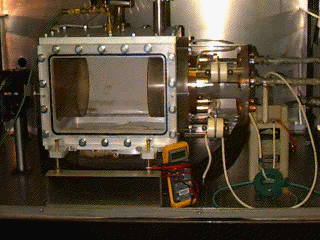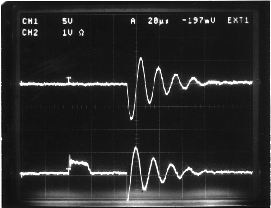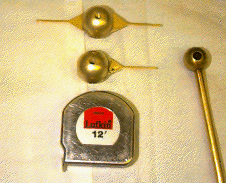Channels to guide intense ion beams
In a reactor chamber the proper production and control of the Z-discharge channels is an essential element of establishing the feasibility of this concept. Even if targets illuminated by a single ion beam prove practical, two current-carrying channels are required. As a practical minimum we are investigating techniques that bring two ion beams to the target and require two to four channels to return the current to the chamber wall. There are many issues that must have acceptable solutions. These include breakdown control within the reactor chamber; matching and synchronizing the discharge size and current to the incoming ion beam; understanding and avoiding potential channel and/or beam instabilities; etc. It is almost certain that many elements needed for generating proper Z-discharge channels will conflict with elements of existing inertial fusion chamber concepts. These conflicts must be resolved and a credible scenario developed that contains all the required elements.
We are investigating a method of generating Z-discharge channels at parameters near those required in a power plant. A krypton-fluoride (KrF) laser is used to form a straight tenuous plasma approximately 0.5 cm in diameter and 44 cm long in a gas composed of 5 to 10 Torr nitrogen and 0.2 to 0.5 Torr benzene. The laser ionizes the benzene by a two-step photon absorption process. A voltage of 5 to 30 kilovolts from a capacitor bank is applied along the plasma channel causing a current of as much as 50 kA to flow along the channel. A photo of the experimental chamber is shown in the figure below. The laser enters the chamber from the left and exits to the right through small holes in two copper plates that form the electrodes for the Z-discharge.

Photo of the Channel Discharge Apparatus.
Energy from a prepulse capacitor is switched across the discharge electrodes at the moment the laser is fired. This energy flows through the plasma produced by the laser and strongly heats the gas. Expansion of the gas creates a low density bubble along the path of the laser that connects the discharge electrodes. The gas density in this bubble is as much as a factor of ten lower than ambient. After a delay of 10-30 µsec the main capacitor bank is fired across the discharge electrodes forming a new discharge through the gas bubble. This discharge can be precisely timed and could in principle easily be synchronized to an incoming heavy ion beam. Oscillograms showing the discharge timing are shown in the oscillograms below.

Oscillograms of the Z-discharge current and
voltage
The upper trace shows discharge current (18.3 kA/div). The
lower trace is voltage across the discharge (10
kV/div).
We are also investigating the interaction of Z-discharge currents in the vicinity of a fusion target using the model targets shown ibelow. A model target is mounted at the center of the discharge chamber and the KrF laser beam passes through a hole in the target. This permits the KrF laser beam to designate a channel from each discharge electrode to the model target. The needles visible in photo are used to control the current in the vicinity of the target.

Various models used to study and control the interaction of the discharge currents near a fusion target
A pseudo-color, 20 ns gated TV image of current-carrying channels intersecting a brass target is shown below. Current flows vertically to the chamber wall through the two rods that support the ball. The image was obtained near the time the channel diameter was at a minimum. For this particular experiment, the model target was a 2 cm diameter ball without needles.

Gated TV image of discharge channels intersecting a
brass ball
Current is carried to the ball from both sides and returns
to the chamber wall vertically through brass rods
supporting the ball.
These experiments show that plasma channels 10 to 20 cm
long and carrying kiloampere currents can be made to
intersect with a model target and return to the wall as would
be required in a heavy ion fusion power plant. These channels
are approximately the correct diameter to match the beams to
a fusion target. Moreover, the channels can be easily be
synchronized to the incoming beams of heavy ions. However,
many more experiments, particularly with channels measured in
meters, are required to establish this technique as a viable
approach to channel transport in an operating inertial fusion
power plant.
For comments or questions contact WMSharp@lbl.gov or DPGrote@lbl.gov. Work described here was supported by the Office of Fusion Energy at the US Department of Energy under contracts DE-AC03-76SF00098 and W-7405-ENG-48. This document was last revised November, 2001
